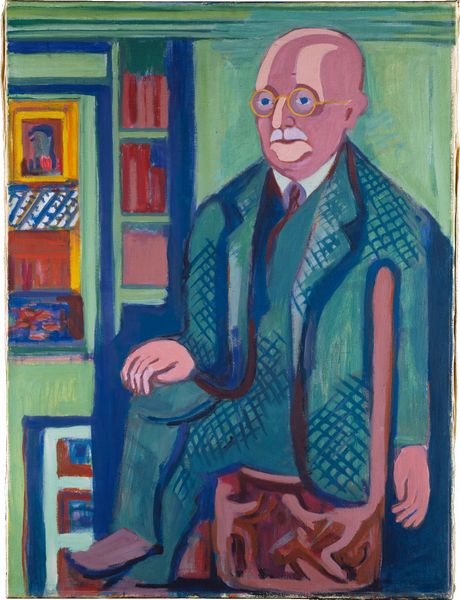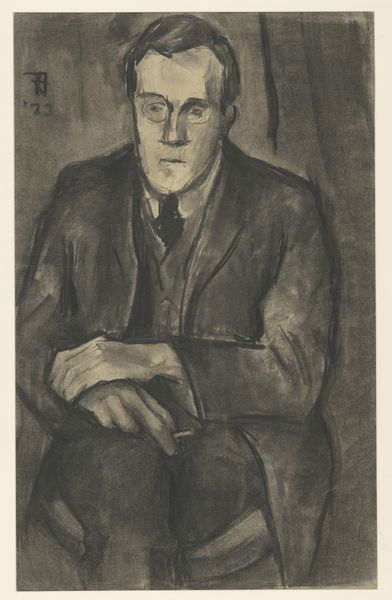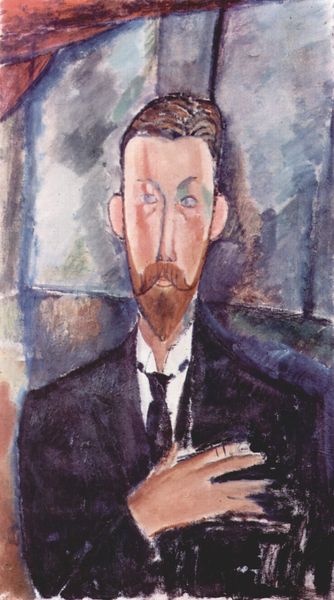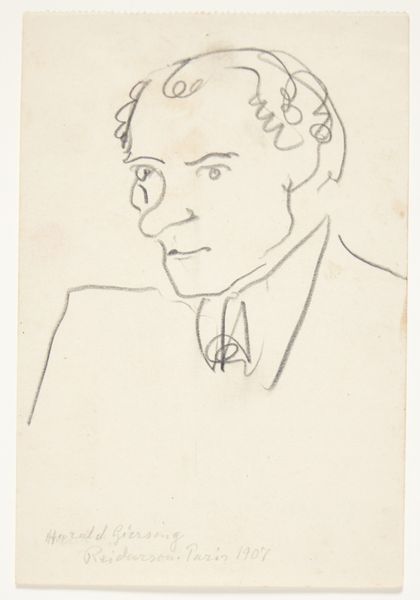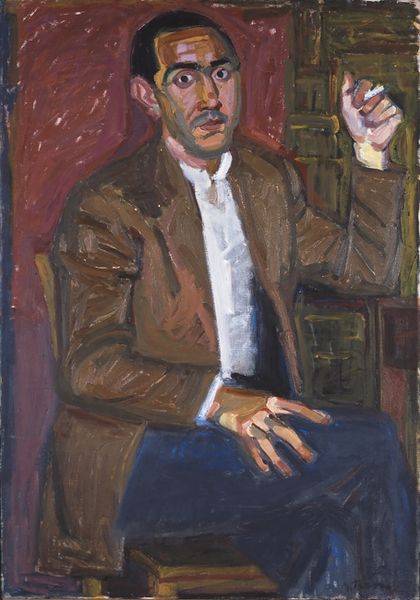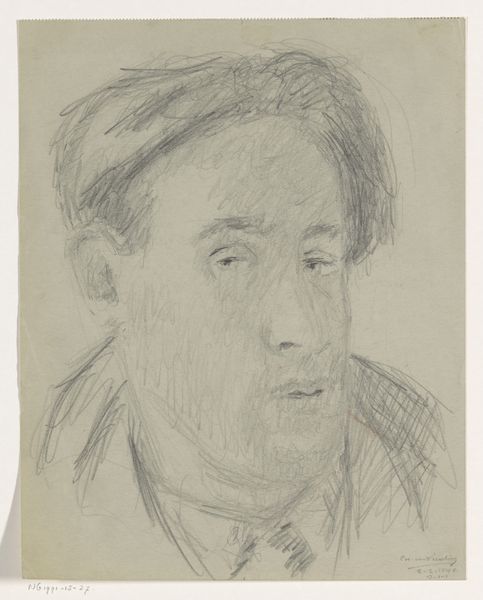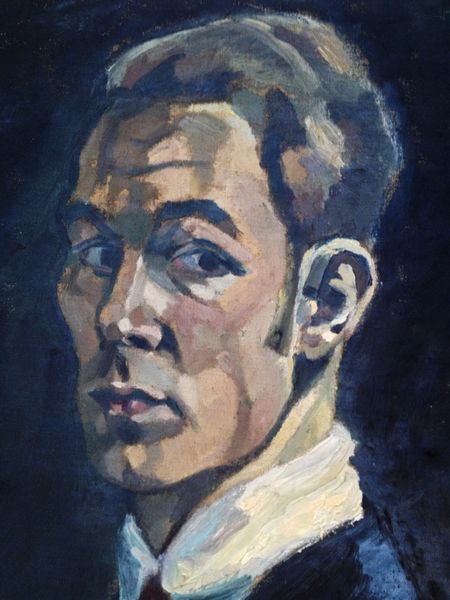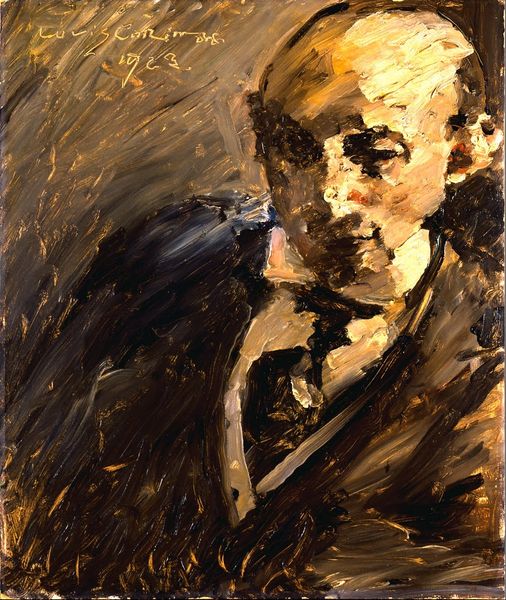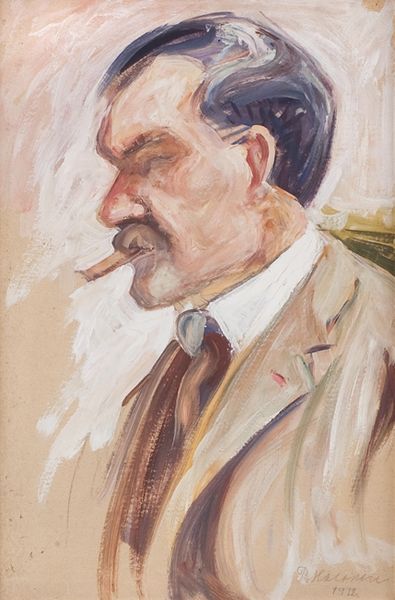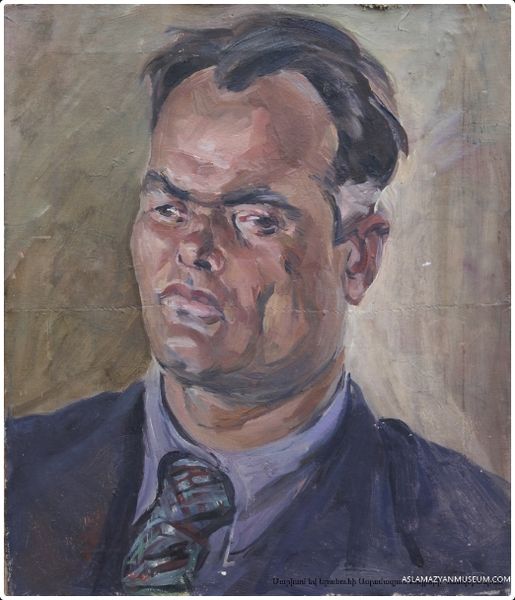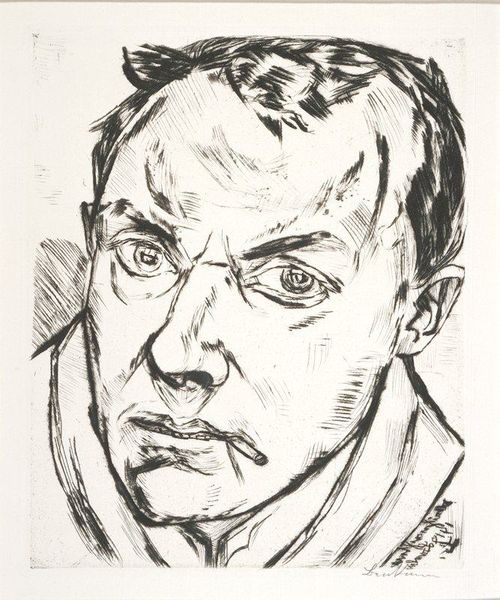
Dimensions: 292 mm (height) x 227 mm (width) (bladmaal)
Editor: So this is "Self-Portrait in Lamplight" by John Christensen, created in 1939. It's a watercolor and drawing on paper. The somber colors give the piece a kind of weary feeling. He’s holding a pipe and a brush…What do you make of it? Curator: Immediately, the lamplight itself strikes me as a symbolic anchor. Consider what light represents – knowledge, revelation, truth. Here, in the waning light, does it illuminate or obscure? Does it hint at self-awareness or introspection, especially given that it’s a self-portrait? Editor: I hadn't thought about the lamp light in that way. It almost seems like he’s scrutinizing himself. What's with the pipe? Curator: The pipe also bears symbolic weight. In art and literature, pipes have long been associated with contemplation, artistry, even a bohemian lifestyle. Do you feel that aligns with the brush in his other hand? How do these elements coalesce into a narrative of the self? Is he trying to reveal his artistic persona? Editor: Maybe he's trying to show us how he sees himself, as a deep-thinking artist. Is it the visual symbols of the pipe, the brush, the dim lamplight… they all feel deliberate. Curator: Precisely! This isn’t just a depiction, but an enactment of identity. We see cultural memory embedded in those carefully chosen visual signifiers, blending into his personal expression. This piece becomes a window into the cultural understanding of the artist’s soul during the pre-war era, marked by the collective anxiety. Editor: That makes me see so much more complexity here. I was stuck on the gloomy colours, but there's so much intention. Curator: Yes, it serves as a cultural artifact as much as it's an image, inviting viewers to unravel its historical and personal meanings, through an understanding of symbolic cultural codes.
Comments
No comments
Be the first to comment and join the conversation on the ultimate creative platform.
